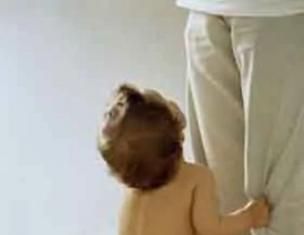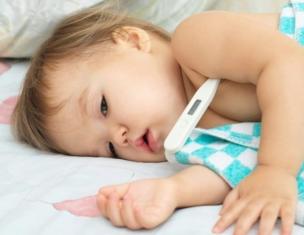Aesthetic perception also changed under their influence. In part, a person created a culture, and then he chased after it. What we consider beautiful today would have been perceived completely differently half a century ago. Even today, in different parts of the world, different hairstyles are considered beautiful and permissible. Let's take the usual European hairstyle. It is not overloaded with details, simple and lightweight. But looking at the hairstyles of various tribes from southern Africa, you understand that their lifestyle is very different from what we are used to.
But now let's focus on the nineteenth century. However, judging only this century, it is impossible to understand the fullness of the changes. Women's hairstyles of the 19th century have their origins in the previous century.

In the eighteenth century, the development of fashion can be divided into several periods. Until the thirteenth year, the eighteenth century, women still wear lush hairstyles, which are works of art. However, Louis Fourteenth commented positively on the small and modest hairstyle, decorated with flowers and a headdress. After that, all the ladies began to copy something like that, and a new trend appeared, simplicity and lightness. Various hairstyles were created, they were given names, some of which have survived to this day. This is a butterfly, a secret or a sissy.
But, the mid-seventies, again changed the fashion for hairstyles.

Tall, sophisticated, filled with jewels, fabrics, flowers and fruits. This is what the new trend began to demand. However, by the beginning of the eighties, such bulky hairstyles began to become obsolete.
By the beginning of the nineties, under the influence of the revolution in France, the ideas of freedom, equality and brotherhood, in alliance with antiquity, created a new trend, which became a logical continuation of the changing hairstyles of the late eighteenth century. Classicism prevailed in hairstyles. Hair stopped powdering, curling.
The changes in women's hairstyles in the 19th century began with the fashion for the Greek or Roman style.

A lot of hairpins, tiaras adorned the hair of women of fashion. Sometimes, for one creation of one hairstyle, girls spent a whole day, and this was considered, quite, normal occurrence familiar to society.
The early thirties brought the fashion for blondes.

They focused on combing in the side parting, curling from the sides in large curls and laying them above the temples. Pinned into a variety of hairpieces long hair left behind.
The forties were marked by the arrival, replacing the shades of blondies, with red hair.

To help create 19th century women's hairstyles, new tools have emerged to help make hair easier to style. The curling iron used in hot curling appeared, more advanced versions of which are still used today.
In the fifties of the nineteenth century, the hairstyle consisted of a chic chignon, sometimes the hair at the back was laid in a special net.
Actually, from the second half of the nineteenth century, hairstyles began to be simplified. Naturalness has become a priority. Increasingly, hairstyles were curled into curls and secured with a hair clip. But large and lush hairstyles remained as an accessory at a gala evening, right up to the beginning of the twentieth century.
- Fashionistas of the sixties raised their hair above their forehead in the form of 2 rollers, and long curls descended on the shoulders, back.
- In the seventies, the hair calmly went down, and at the temples it was combed up.
- The eighties kept the traditions of the seventies.
Gradually, the fashion for lush and extremely complex hairstyles is passing, being replaced by simpler ones, and of course, the fashion did not stop there. The approaching twentieth century brought new breaths, and once again fashion began to dictate its own criteria for beauty.
19th century hairstyles are based on not too significant lengths with numerous comb options. They replaced the bulky structures of the 18th century, reaching 50 cm in height.
19th century hairstyles did not obey strict rules... Women were guided, first of all, by their own taste (or the taste of the immediate environment) and imagination.
Historical reference
Men in the 19th century performed laconic haircuts and styling. If at the dawn of the century it was impossible to see a young dandy without whipped bangs, then later men's hairstyles acquired such an obligatory element as a parted part. Hair was usually curled.
Hairstyles for women in the 19th century are mainly represented by small-diameter rings that fall over the forehead, braids that adhere to the back of the head with a comb, and curls along the shoulders.
- The hairstyles of the early nineteenth century were performed in the Greek manner. With help curled hair a ring of sufficient density was created around the circumference of the head, which reached almost to the line of the eyebrows, and was fixed at the back with the help of a lush bun. In this case, a chignon was used, intercepted by a bright ribbon.
- The aristocratic styling was replaced by turbans created from a silk base, muslin, and gauze fabrics. Jewels with feathers were used to decorate the structure, and stacks of lace and pearls were used for the hair.
- With the onset of 10–20-ies. In the 19th century, turbans and nets have sunk into oblivion. They were replaced by small curls, which were made in the forehead, temples and collected with the help of a beam at the back. This was followed by the separation of the hair with a parting, braiding in braids and styling in the form of a nest at the back of the head. Curled temporal locks in these hairstyles framed the cheeks.
- With the arrival of the 30s. In the 19th century, lush vintage hairstyles in the style of the Marquise de Pompadour came into use, which were combed up in the form of a chignon with support in the form of a comb. A lush wave of hair descended from the temples towards the ears. Such styling from the time of Pushkin was decorated with pearls and fresh flowers.
- In the 40-50s. In the 19th century in Russia, it was in vogue to divide the hair into a parting, when the strands were released in front, and the other hair was combed up. The construction ended with a structure in the form of beams, nests and bows. These hairstyles in the old days evoked admiring men's looks.
- In the 60s. Of the 19th century, hairstyles from corrugation appeared, which were collected at the back of the head in curvy bunches and covered with a net. Over time, it was decided to lower the styling all the way down. There are many modern counterparts for similar women's hairstyles of the 19th century (see photo).
- In the 80s. In the 19th century, it became fashionable to create braids, curls, buns and heavy knots from hair. High hairpieces, single-strand onlays and wigs were commonly used. Hair that is simply loose over the shoulders has come into fashion. Many people preferred low and uncomplicated styling.
- The end of the 19th century was characterized by a complete rejection of high hairstyles enhanced splendor. They were replaced by modest, simple, but at the same time enough interesting options, which were done even at the ball. From the photographs of those times, girls and women with soulful faces and neatly trimmed hair are looking at us.
A hairstyle from the golden age: a modern take
How to make a 19th century hairstyle based on classic long hair styling? To do this, you need to prepare:
- small round pliers;
- crest;
- two thin elastic bands, the color of which matches the color of the hair.
Hairstyle in the style of the 19th century - ideal for a Pushkin ball with your own hands. It can be easily built independently. By the way, it is with this hairstyle that Natalia Goncharova is depicted in the portrait of V.I. Gau, familiar to many of us from literature textbooks.

- Pre-washed and dried hair must be brushed. Having retreated some distance from the forehead, a crescent-shaped parting is performed. You can use a hair clip to temporarily secure the strands.
- Then made from the remaining hair ponytail tying it with a thin elastic band. The tail is braided into a braid that wraps around the base of the tail. The structure is fixed using invisibility.
- The upper strands, which were laid aside earlier, should be divided with a straight parting and curls should be created. To do this, wind the hair upwards on hot tongs. The result is curls and impressive curls in a spiral that cascade down the neck.
Such a female hairstyle of the 19th century, like many modern ones, requires fixing with varnish. If you want to be on prom in the spotlight, try to get creative with this styling. You can use a roller for splendor, use numerous braids, or build something like a nest out of your hair. In order to decorate the hairstyle, flowers are used (always live), hairpins bright colors, feathers, etc. However, here it is important not to overdo it: such a hairstyle should be characterized by restraint and dignity.
Even those girls who are not very skilled in hairdressing do their own hairstyles of the 19th century.
After the Great French Revolution, the wind of change rustled through the ladies' hair. The era of bulky powdered wigs and grandiose hairstyles is a thing of the past. For the first time in European history, women have cut their hair so short.
After the actor Talma played the role of Titus in the production of Voltaire's tragedy "Brutus" in 1790, the hairstyle "a la tit" came into fashion. She was immediately taken over by the ladies. In the famous portrait of Madame Recamier by David, one can see short hairstyle from curls, loosely scattered over the head and slightly caught up with a ribbon.
There were also more radical hairstyles. For example, "savage", which is a messy shock of crumpled and matted hair. Or a hairstyle with the eerie name "a la Victim" (sacrifice), dedicated to the victims of the guillotine - with a high-cut back of the head and a thin red ribbon symbolizing the bloody mark from the blade.
At the beginning of the 19th century, the hair was letting go longer and longer, and the hairstyle was lifted up. Imitating antiquity, hair is gathered at the crown or back of the head in a "Greek knot".
.jpg) The hairstyle "a la Ninon", copied from a portrait of a courtesan of the time of Louis XIV, is also very popular: a light curled bangs on the forehead, above it there is a horizontal parting, and on the temples - large curls up to the shoulders. The rest of the hair was gathered at the back of the head in a flat chignon with an ostrich feather stuck in.
The hairstyle "a la Ninon", copied from a portrait of a courtesan of the time of Louis XIV, is also very popular: a light curled bangs on the forehead, above it there is a horizontal parting, and on the temples - large curls up to the shoulders. The rest of the hair was gathered at the back of the head in a flat chignon with an ostrich feather stuck in.
In the 1820s and 30s, hairstyles were the same vertical (in fashion - a graceful neck and open shoulders), however, no trace remains of the former simplicity and freedom. Several long twisted strands are released at the temples, and the rest of the hair is parted and carefully laid on the crown in a high pouf of the most bizarre shape. Especially popular is the so-called. "Apollo's knot" - in the form of two loops of braids, wound for stability on a wire frame.
A more modest hairstyle was "a la Clotilde", which was on the head of the Queen of England during the coronation: two pigtails, twisted around the ears with rings and fixed at the back of the head.
The brooches and pigtails were curled so tightly that they seemed to have been hewn out of stone. Inevitably, an anecdote about a constantly smiling girl came to mind (“Did you try to loosen the bow?”).
T. Gauthier "Fashion as art":
“Appreciate these knots gathered at the back of the head, curls, twisted braids, like the horns of Amun or the curls of the Ionic capital! Could an Athenian sculptor or Renaissance painter have arranged them with great grace, invention and taste? "
Add to this an abundance of jewelry (pearl threads, ribbons, flowers, combs) and you will understand how  it was difficult to preserve these "architectural creations" during the energetic ballroom dancing. Despite the complex hairstyles, it was considered indecent to go out on the street with a bare head, so women wore wide caps and bonnets - it seemed that the head of the charming lady was traveling in a separate covered carriage.
it was difficult to preserve these "architectural creations" during the energetic ballroom dancing. Despite the complex hairstyles, it was considered indecent to go out on the street with a bare head, so women wore wide caps and bonnets - it seemed that the head of the charming lady was traveling in a separate covered carriage.
One more fashion trend the first half of the 19th century, one can also consider that for long time brunettes have finally pushed the blondes. To give more dark color and grease the hair with oil.
John Keats:
Curls of dark curls, Like whimsical vines, They knit lush knots: And behind every club of darkness, As if a secret is a revelation - Perlov is a wondrous phenomenon.
In the 1840s and 50s, a modest, moderate, respectable woman came to the fore. Accordingly, the hairstyle also straightens and calms down. The knot slides from the top of the head to the back of the head. The hair is combed with a parting, goes down low along the cheeks and is laid in the back with a soft knot or a bunch of curls.
G. Flaubert "Madame Bovary" (1856):
"Smoothly combed black hair, gathered very low, descended to her cheeks, touching the ends of long eyebrows, and, as if with gentle palms, squeezed her oval face."
Sometimes the strands were braided into a heavy braid, which was neatly laid on the head.
.jpg) In the second half of the 19th century women's hairstyles start to get complicated again. The tone in fashion is set by Empress Eugenia - the wife of Napoleon III - a big fan of the Rococo style. Fashionable styling become an ingenious combination of curls, poufs, braids and bolsters. Usually, the hair was combed and lifted from the forehead to the back of the head, after which it fell down behind the shoulders in a shock of long curls. As a result, small graceful hats, which were worn almost on the forehead and were fastened with a ribbon not at the chin, but on the back of the head, right under the hair, are coming into fashion.
In the second half of the 19th century women's hairstyles start to get complicated again. The tone in fashion is set by Empress Eugenia - the wife of Napoleon III - a big fan of the Rococo style. Fashionable styling become an ingenious combination of curls, poufs, braids and bolsters. Usually, the hair was combed and lifted from the forehead to the back of the head, after which it fell down behind the shoulders in a shock of long curls. As a result, small graceful hats, which were worn almost on the forehead and were fastened with a ribbon not at the chin, but on the back of the head, right under the hair, are coming into fashion.
It was difficult to arrange all this splendor only at the expense of one's own hair, therefore strangers were actively used. Hair was bought from peasants, collected in Catholic monasteries and prisons. And some ladies even picked up their hair that had fallen out and put it in special vases.
Wits of that time joked that a drowning lady should be pulled by her dress, and not by her hair, otherwise only an artificial braid may remain in her hands.
O. Henry "Gifts of the Magi":
“- Would you buy my hair? she asked Madame. “I’m buying hair,” Madame replied. - Take off your hat, you need to look at the goods. The chestnut waterfall began to flow again. - Twenty dollars, - said Madame, habitually weighing a thick mass on her hand.
In 1876, the hairstyle became more accurate, and the lush curled bangs, which we can see in the red-haired beauties from the paintings of Renoir, came into fashion.
Yes, "bright minds" are back in fashion. Moreover, by this time the hairdresser Hugo, who worked at the court of Empress Eugenia, .jpg) found a revolutionary way to bleach hair with hydrogen peroxide. Another important invention was the curling iron invented by Marcel Grato in 1872. It was then heated from a gas burner, therefore, in order not to burn the hair, the curling iron was first brought to the paper.
found a revolutionary way to bleach hair with hydrogen peroxide. Another important invention was the curling iron invented by Marcel Grato in 1872. It was then heated from a gas burner, therefore, in order not to burn the hair, the curling iron was first brought to the paper.
At the turn of the XIX-XX centuries. ideal female beauty become so-called. The Gibson Girls are the characters of the American illustrator Charles Gibson: impeccable, self-confident and skillfully manipulating men. It is thanks to the "Gibson girls" that the hairstyle "a la Pompadour" is gaining popularity again - hair combed back, raised high and protruding over the forehead in the form of a roller.
At the beginning of the 20th century, the splendor of women's hairstyles reaches its next climax. In the "Ladies' Journal" for 1912, they even wrote that the city councils prohibited ladies from entering the tram, whose hairstyles were strewn with prickly hairpins and pins. Huge hats with ostrich feathers also matched the hairstyles. But the First World War thundered and the men returning from the front did not recognize their women ...
The hairstyles of the 19th century are distinguished by their originality and originality. At that time, it was not possible to do such a styling without someone's help. However, now such hairstyles have been greatly simplified, while not relieving them of a certain charm and sophistication. They make their owners plunge into the times of princes and princesses, even in the modern world.
The history of 19th century hairstyles
In the 19th century, all fashion changed in a fairly short time, almost every 10 years. Moreover, the changes were dramatic. At the beginning of the century, long hair of golden and blonde shades were welcomed, which were the property of any lady. Hairstyles were uncomfortable, complicated, high, and dark colors the hair was burned out and incredibly short, almost boyish haircuts, twisted into curls.
But fortunately, thanks to Queen Victoria, lungs came into vogue in the 40s, natural hairstyles ... Curled loose curls, straight partings, elegant bunches, neat braids and interesting weaving have gained popularity. It was also fashionable to collect hair not on the top of the head, but strictly on the back of the head, while opening the neck. The most favorite element was braids, a variety of weaves. They adorned the heads of ladies not only on holidays, but also in Everyday life.
 In the second half of the 19th century, the first legislator new fashion became Empress Elizabeth of Austria, which weaved live beautiful flowers to give even more volume... However, the hairstyles of the late 19th century underwent changes again. This was due to the renewal of the styles of the dresses. The skirts were narrower and were gathered at the back. With these outfits, the old haircuts looked ridiculous. The whole hair styling technique began to be reduced to combing the hair at the back of the head.
In the second half of the 19th century, the first legislator new fashion became Empress Elizabeth of Austria, which weaved live beautiful flowers to give even more volume... However, the hairstyles of the late 19th century underwent changes again. This was due to the renewal of the styles of the dresses. The skirts were narrower and were gathered at the back. With these outfits, the old haircuts looked ridiculous. The whole hair styling technique began to be reduced to combing the hair at the back of the head.
Jewelry still hasn't lost its popularity, but the use of artificial hair-chignons has become an innovation.
Fashionable men's haircuts of the era
Concerning male style 19 century, then high-laid bangs were popular at that time, but over time they were replaced by a short straight parting. Hair length also decreased, from trendy long curls to very short hair... In the 20s and 30s, it was also customary to shave off a mustache and beard, but by the 40s, facial hair was again becoming a fashion trend.
DIY Victorian hairstyle
Modern girls always associate aristocratic old hairstyles with balls and a fairy tale. Nowadays, walking with such a hairstyle in everyday life is not possible. However, if necessary, you can always revive the era of European fashion with your own hands at home thanks to modern devices and imagination.
To recreate the hairstyle you will need:
- curlers different sizes;
- curling iron;
- elastic bands, hairpins;
- accessories (nets, flowers, ribbons);
- hairspray, mousse, styling foam.
 To consolidate the result or eliminate minor imperfections, if desired, you can use liquid hair wax. Such hairstyles are performed only on completely washed and perfectly combed hair.
To consolidate the result or eliminate minor imperfections, if desired, you can use liquid hair wax. Such hairstyles are performed only on completely washed and perfectly combed hair.
The main part of the styling of the Pushkin era is curls, curled curls, which are made with curlers or curling irons and are fixed with hairpins and varnish for strong fixation. Spiral curls look very natural.
Nowadays, thanks to new styling products, you can make a wide variety of hairstyles for every taste. Modern masters are trying to come up with new interesting haircuts. But the feminine and romantic hairstyles of the century before last are again attracting attention. fair half society.
A bit of hairstyle history
Regarding the history of hairstyles, it should be noted that in the early 19th century, sleek hairstyles with strict lines were worn. The style of clothing that was fashionable in those days implied such a choice. But fashion does not stand still. By the middle of the century, voluminous hoop skirts had become popular, and sleek hairstyles would already have brought disharmony to the image. Therefore, there appeared lush romantic styling with carelessly knocked out delicate curls, which are very fond of beautiful ladies. The sophisticated and monosyllabic hairstyles of the 19th century have now regained their popularity. Light curls of different sizes looked beautiful in romantic hairstyle... Girls with such styling looked like ancient Greek goddesses. The curls looked natural and light, and the shoulders were decorated with separate strands, as if falling out of the hairstyle, in some cases animated with beads, flowers, ribbons. Feminine and mysterious hairstyles of the 19th century (photo in the article), and their owners are charming and romantic.
Styling technology
Do-it-yourself 19th century hairstyles. To create images of the era of Lermontov and Tolstoy, ordinary curlers or thermo of different sizes are needed. With their help you can do beautiful curls... It is the lightest and convenient way curling hair. But it has little secret: be sure to wind the strands in the right direction, because then it will be difficult to put them in a neat hairstyle. An incorrectly rolled strand will look inorganic in the hairstyle, and it will be difficult to correct it. A big plus of this method is that the curls will keep the given shape for a long time. You can curl them in another way - with a curling iron. Individual strands of hair are taken, twisted one by one in the desired direction. In this case, you can adjust the size of the curls using attachments of different diameters.
To fix the hairstyle of the 19th century, various devices are used: clips, invisible hairpins, hairpins, hairpins, elastic bands. And also decorations: flowers, beads, ribbons. In general, everything that is needed to embody the intended image. When curling hair, you need to use special means for better fixation. These can be foams, mousses, depending on the type of hair. And for careful handling before applying these products, you need to use thermal protection. The final version of the hairstyle is fixed with varnish.

Classic styling
Classic hairstyles of the 19th century. How to make at home from hair middle length? They consist of bunches, braids (they can be decorated with something), fixed in buns at the back of the head, and beautifully laid curls at the temples. You will need curlers or a curling iron for curling the desired strands, means for thermal protection and fixation, hairpins, elastic bands, a comb with a long thin handle. Let's start shaping one of these hairstyles.

- Divide the hair into a straight parting, then after about five centimeters make a transverse parting - perpendicular to the previous one.
- Carefully separate the strands for curling and styling at the temples.
- Take the hair of the back of the head, put it in a bun, fasten it with an elastic band on the crown and braid the tail into a fluffy torn braid, wrap the braid around the base and secure this structure with hairpins.
- Then treat the remaining hair with thermal protection, but at the ends, where there will be curls, it is not necessary.
- Apply the fixing agent. Gently curl the strands into curls and lay them beautifully on the temples. Fix the hairstyle with varnish.
Classic styling with a low bump.
- You will need everything that was used in the first example.
- Comb your hair well.
- Gently part in the middle.
- Separate the back of the head with a transverse line and wrap a voluminous low bun, a little sloppy.
- Secure with hairpins.
- Curl the hair on the temporal part with a curling iron or curlers.
- Lay nicely.
- Fix with varnish.
Low cushion with free waves at the crown
For work you will need: a curling iron or curlers, invisible hairpins (you can use decorated tips in the form of beads or flowers), a comb with a long thin handle, mousse for styling hair, varnish.
- To give romantic image you need to wind the hair all over the head to the full length in the direction from the face. This will add volume to your hair. Divide the curls gently with your fingers and lay all the strands in the direction from the face to the back of the head. If your hair is thin, you need to comb it a little at the roots to add volume.
- Then, with your fingers, gently, without pulling the strands too much, leaving beautiful waves, collect them freely at the back of the head, fasten them with invisible lines along the line at the level of the middle of the ear. If the invisibility does not hold, you still need to comb it in this place.
- Then carefully take the curls from below, twist them into a transverse, careless roller and secure with beautiful hairpins.
- A few curls need to be released at the temples and around the neck. Fix the hairstyle with varnish.
This is very romantic image, it was often used for hairstyles at the 19th century ball. Therefore, it can also be done for a celebration.

Asymmetrical bun or bun
This 19th century hairstyle looks elegant and luxurious, it can be worn when attending social events. To work you need the same as in the previous hairstyles.
- Roll the hair along the entire length using fixing agents and thermal protection. It is advisable to protect your hair from exposure high temperatures to make your hair look healthy and shiny. With well-groomed hair, any woman looks gorgeous even without voluminous styling.
- Carefully separate the curled curls with your fingers, without combing. Carefully separate the back of the head, as in the classic style, tie this part of the hair in volumetric beam or a bun (it should not be tightly tightened, as if carelessly grabbed) with pins.
- Release a few curls to add romance. You can make such a design asymmetrically, from either side.
- Beat the strands of the front part a little, if there is not enough volume, comb at the root. Gently, without stretching, leaving beautiful waves, lay back and secure with invisible ones. Leave light curls on the temples.

Conclusion
Hairstyles of the 19th century are surprisingly elegant and are able to surprise and charm numerous fans with their appearance. A woman with such styling looks like a goddess and, accordingly, feels like the ruler of men's hearts. Beauty is a great power, especially since it is quite easy to achieve such success at home, on your own.









